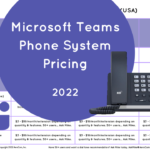In the beginning, companies were required to buy, build, and maintain their IT infrastructure despite exponential costs. Software as a Service gives companies an alternative to that historic route. Now, SaaS allows users to plug in and subscribe to services build on shared infrastructure via the Internet. We provide for you some key tips to remember while you’re in the market for SaaS. These key features should be in the back of your mind to make sure your company and IT needs are being met!
High Adoption: SaaS applications are available from any computer or any device—at any time! Most people are familiar with using the Internet to find what they need, SaaS applications tend to have higher adoption rates.
Lower Initial Costs: SaaS applications are a subscription based product. No license fees mean lower initial costs and allowing the SaaS provider to manage the IT infrastructure- lower IT costs for hardware, software, and the people needed to manage it.
Painless Upgrades: Your SaaS provider will manage all updates and upgrades; as well as availability so there’s no need for customers to add hardware, software, or bandwidth as the user base grows.
Seamless Integration: Vendors can scale indefinitely to meet customer demands. Many providers also offer customization capabilities to meet specific needs.
Why SaaS is Popular for the Enterprise:
The popularity of SaaS is increasing due to its simplicity and reduction of customer acquisition costs. Developers are allowed to support many customers with a single version of a product; an approach known as multitenancy—which allows companies to scale as fast and as much as needed without replacing costly infrastructure or adding IT staff.
Why SaaS is Popular with IT:
A study conducted by Forrester Research surveyed a thousand IT professionals and found that many IT professionals are turning to hosted SaaS products as a way to offload management of applications such as HR and CRM. The subscription-based SaaS pricing model also kept IT budget costs lower.
[php snippet = 8]







